Kopan Monastery: Introductory Buddhism Course – Nepal
Kopan Monastery – Introductory Buddhism Course
Some time ago, I read an article on the Internet about the Introductory Buddhism Course from Kopan Monastery. I immediately searched for details about the course on their website, filled out the application form, and reserved a spot. I was eager to learn about Buddhism within an authentic environment. The Tibetan landscapes with Buddhist monasteries lost in high snowy mountains always attracted me. I truly wanted to experience the lifestyle of a Buddhist monastery. Kopan Monastery wasn’t located in mountains with huge rocks and bald eagles, as I would have liked, but rather on the outskirts of Kathmandu. I was still curious to go there, though.
When I arrived in Kathmandu, the Nepali (especially the Hindu ones) asked me with curiosity.“You want to stay for ten days in a Buddhist monastery?” “Why not ?!” “What are you going to do there?” “I have no idea, that’s why I’m going there, to find out.”
On my last day in Kathmandu, I had a quick breakfast on the rooftop terrace of my hotel in Thamel and went down in the street to bargain a taxi. “Kopan?” “1000,” “600,” “900,” “700,” “800,” “700.” Of course, I had known the right price beforehand. I asked the taxi driver to come and pick me up in front of the hotel. The following hour, we were lost and drowned in the urban, chaotic, and heavy traffic of Kathmandu. The downside was that I still had to wear a pollution mask even inside the cab. Eventually, we reached the luxurious Monastery of Kopan situated in a poor and dusty suburb of Kathmandu.
At Kopan Monastery, I had to face different questions: “Why are you here?” asked Mijua, the Polish who was thinking to take a break from backpacking after he had been traveling the world for ten years (he continues his journeys at this moment). “I’m very curious,” I answered. Next, we did the check-in, and more people arrived. Noise. Agitation. The monastery’s dog sniffed the newcomers. Mexicans, Americans, Germans, French, Spanish, Australians, Canadians, a total of about one-hundred-and-fifty persons had enrolled in the Buddhism Course at the Kopan Monastery.
Kopan Monastery: the organization
The monastery had a colorful gateway, a reception on the right side of the entrance, and a shop with a caffé on the left side of the entrance. A gompa (the equivalent of a church) was right ahead (up a group of stairs from the entrance) and a dining room was on the right from the main gompa. A bit further, there was a garden with a stupa in the middle and then shabby buildings with rooms for pilgrims down a group of stairs (on the right side of the garden). A few luxurious buildings, overlooking the city, with accommodation for picky tourists were located going down another group of stairs (on the left side of the garden).
On the first day, I stayed in the same room with an American girl, but during the night, my allergy to dust mites activated and I couldn’t sleep at all. The following day, I urgently required a big, ventilated room (supposedly, a luxurious one: an en-suite room with hot water). I paid the difference and, surprisingly, my MasterCard was functional on the POS of the monastery, on the outskirts of Kathmandu, full of bumps in the muddy and dusty road. Eventually, I moved to another building on the monastery grounds, called Tashi Khang, situated on a terrace with a panoramic view over Kathmandu city. In the evening, I could smell the lilies in the garden when I came home. It was nice to be at the monastery.
Kopan Monastery: the program of the course
Intense, the program of the Introductory Buddhism Course had a rigorous schedule. 6.00 tea, 6.45 meditation, 7.30 breakfast, 9.00 Buddhist teachings, 11.30 lunch, 14.00 discussion groups, 15.00-15.30 break, 15.30 other Buddhist teachings, 17.00 tea, 17.45 meditation, 18.30 dinner, 19.30 questions and answers, followed by other meditations. We weren’t allowed to communicate in any way to each other after dinner, not until the next day at noon. Thus, we were allowed to socialize only between lunch and dinner. If interested, the extended version of “silence” existed at the reception desk. It was a yellow ribbon that meant ‘total silence’. Who wanted to stay in total silence during the ten days of the course had to wear this ribbon.
We had three teachers for the Introductory Buddhism Course at Kopan Monastery. Ani Karin was the course leader – a Swedish Buddhist nun, who had come to the monastery forty years ago after she had been traveling the world for two years. Then, Joan was a Canadian Buddhist nun, who had also been traveling the world for two years before she had become a nun. Most of the time, she lived in Europe, where she taught at Buddhist centers in Spain and Italy. And Geshe was a Buddhist monk invited to give us Buddhist teachings. He didn’t speak English well. I skipped his classes systematically after I struggled to understand something at his first teaching.
On the first days of the course, I found the Buddhist teachings very interesting. Buddhism is a philosophy. Or, Buddhism is not a religion of belief in a god. Buddhism is based on the psychology of our mind. You can overcome suffering and negative emotions through meditation. You should not believe something unless you double-check it and agree with it. I liked Buddhism at once. It seemed more open and flexible than the Christian teachings of our orthodox church I was used to at home.
I had experience meditating and knew meditating had a positive effect on me. For this reason, I wanted to experience deeper meditations at Kopan Monastery. Meditation changes our minds, and we see things differently. I even talked to Joan about the articles I write and it seemed I was doing an analytical meditation when I was taking down my thoughts. Dharma practice is to end our inner suffering forever. I would have liked to not suffer ever again in my life, but I was realistic and knew that I was still far away from that level.
For the first six days of the course, we had discussion groups. Ani Karen divided us into groups of ten people. We met and discussed predetermined topics, already written down on a piece of paper by her. At the beginning of our meetings, we were ten strangers, but we opened our hearts and confessed the most hidden aspects of ourselves. It’s impossible to give an example of what I said or heard during this discussion group. After six days of discussions about the most shocking and terrifying things I could ever think about, I let go completely of the fear of being judged. Thanks, Rebecca, Nathan, Lyne, etc.
On the fifth day, I suddenly felt sad and depressed. Every day, Ani Karin told us about negative karma and suffering (something similar to the Christian repentance and punishment of our sins). Moreover, we learned we could reborn into a lower realm (e.g. devil, snake, wagtail, etc.) if we had negative karma. After she told us these things one thousand times, I felt guilty, scolded, threatened, and punished like a child in the corner of a room. The universal solution we were given to avoid suffering was to jump somehow directly to the level of genuine compassion and unconditioned love. This way, I heard only how we “have to be,” the ideal version. And that we “must not” make mistakes.
Kopan Monastery: my experience
I had the feeling that everything we learned during the Buddhist teachings was only black and white, no shades of gray. We “should” redeem our mistakes and do many good deeds. To accept ourselves as we were, with our good and dark sides, wasn’t a solution. Or maybe I missed exactly that teaching. I felt like a monster. And I hadn’t come for that at the monastery, for sure. I put an end to everything that I heard during the course and asked around me. Some classmates were still levitating, others began to revolt too and skip the classes, while others even left the course and the monastery for good. They didn’t resonate with these teachings either …
In the last days, I began to skip regularly Ani Karin’s classes when she started to tell us standardized conclusions at the end of the meditations. I couldn’t stand it anymore and felt manipulated. I took part only in the guided meditations with Joan, who left us the choice to have our own experiences and answers at the end of each meditation. When I skipped the classes, I rewarded myself with mango juice from the shop of the monastery. I also used the internet after six days. I was a bad person according to their point of view because I broke the rules. But I could accept myself for that. Suddenly, I felt better and even enlightened. I was authentic. I was human, I wasn’t perfect, and I shouldn’t have reached enlightenment right away and fast.
In the last two days, we had a silent retreat, which meant total silence. We only had meditations in the program of the course. The discussion groups didn’t take place anymore. Moreover, Ani Karin told us not even to think of skipping the meditations. When I heard that, I instantly broke the rules. On the last day, I didn’t go to any meditation at all. I wrote, walked around the garden, sunbathed, went to the library, played with the Buddhist dog of the monastery, ah, and I slept … a lot.
Also, Lyne, the Australian mother who had come to the monastery with her two daughters – Amy and Ruby, had no reason to fight to attain enlightenment right away. On top of all, we were hungry after each meal. For ten days, we had been eating only dhal bhat. It was an experience to eat it at the beginning but we barely nibbled from it at the end of the course. We promised ourselves to eat a big steak when we would leave the monastery. Nonsense, I couldn’t find a place to eat a real steak in Nepal!
Kopan Monastery: rituals
On the last evening, we attended a puja Buddhist ceremony, which usually took place in the other gompa, where we weren’t allowed to enter. The monks sat in several parallel rows perpendicular to the entrance. They struck the gong and played various instruments: cymbals, conch shells trumpets, long trumpets, large drums. They recited mantras and even served tea, juice, and biscuits during the puja ceremony (this surprised me deeply). The following day, they started the same ritual over again.
Sometimes, the monks debated the Buddhist teachings in the courtyard of the monastery. One or two monks sat cross-legged, while the rest of the monks stood in front of them and asked questions about Buddha’s teachings. After they asked the question, they snapped their fingers and waited for the answer from the monk sitting cross-legged. They negotiated, argued, contradicted, and deliberated.
In the last two days of the course, we experienced the ‘walking meditation’. While focusing on our breath, we had to walk a predetermined route in the courtyard of the monastery for fifteen minutes. We breathed and walked at the same pace. Thus, we had our minds already focused when we came to the gompa for the daily meditation. I found the walking meditation very interesting. I tried to walk at the pace of my breath and vice-versa. However, I found myself doing it naturally after five minutes. Synchronizing small steps with the breath easily became a reflex. This way, my mind was free to think again whatever it wanted.
After our last meditation in the gompa, a classmate had the idea to create a large circle with all the participants. We held hands and ran toward the center of the circle. When the circle tightened, we gave each other a big hug while exclaiming a universal ‘goodbye.’ It was a big farewell hug for those who hadn’t had the time to know all other one-hundred-and-fifty participants at the course. A monk was deeply moved by our big hug and filmed the scene.
I enjoyed my stay at the monastery, but I couldn’t wait to leave the place at the same time. I learned something I wasn’t expecting when I came to the monastery – practicing Buddhism was not for me. At least not at that moment of my life. But this way I discovered what was good for me – different kinds of meditations. Moreover, I satisfied my curiosity and also achieved my goal: to live in a Buddhist monastery for ten days.
On the last day of the course, I waited for Rishi (my mountain guide-cum-porter) to pick me up from the monastery. It was about time to move on to my next experience. I was leaving for a trek into the Himalayas.
Kopan Monastery – Introductory Buddhism Course is the travelogue about my stay at a Buddhist Monastery on the outskirts of Kathmandu for ten days. You can find the version of this post in Romanian at ‘Curs introductiv de Budism – Manastirea Kopan, Nepal‘. If you want to read more about the trip through Nepal, here are all the Travelogues from Nepal (x12).
Have you ever stayed in a Buddhist Monastery or plan to go to one? Leave a comment below this post and tell me what you liked about staying in a Buddhist Monastery or what you are interested to experience there.
Want to subscribe to my travelogues? Just leave your email in the subscription form below, and you’ll be notified when I publish a new post.
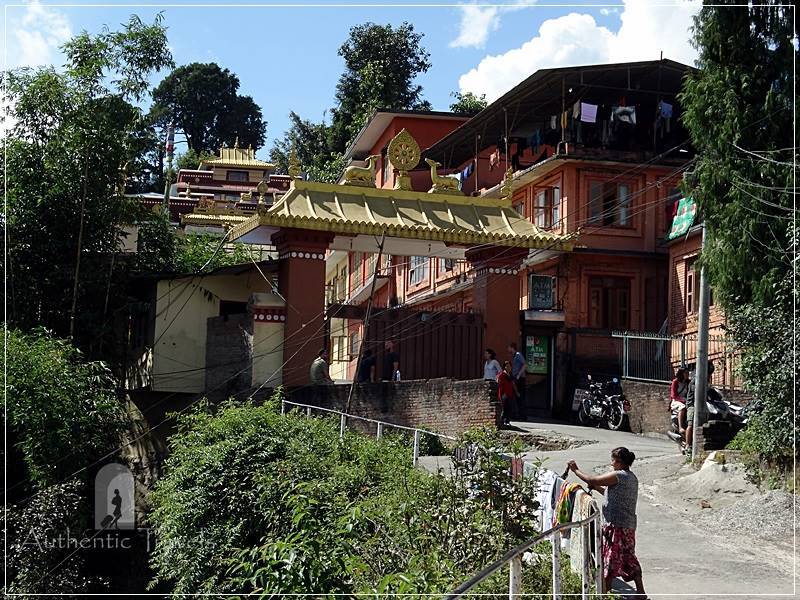
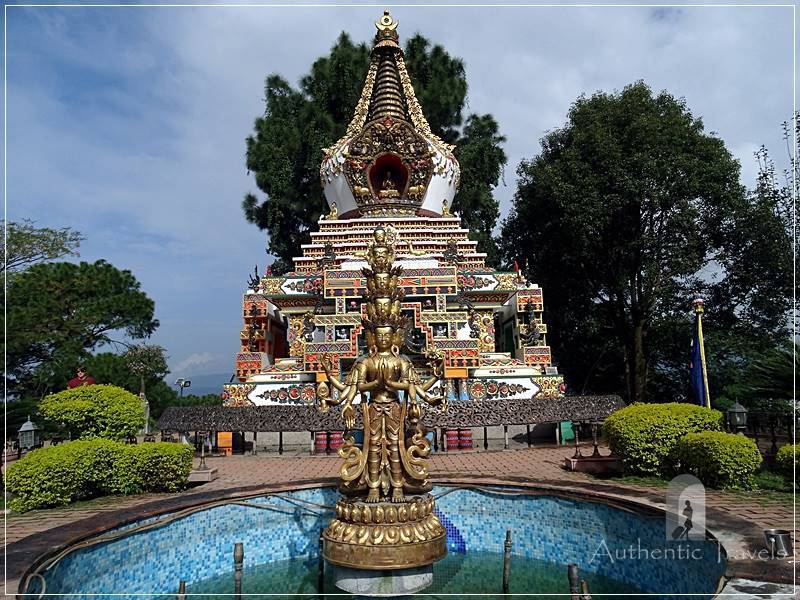
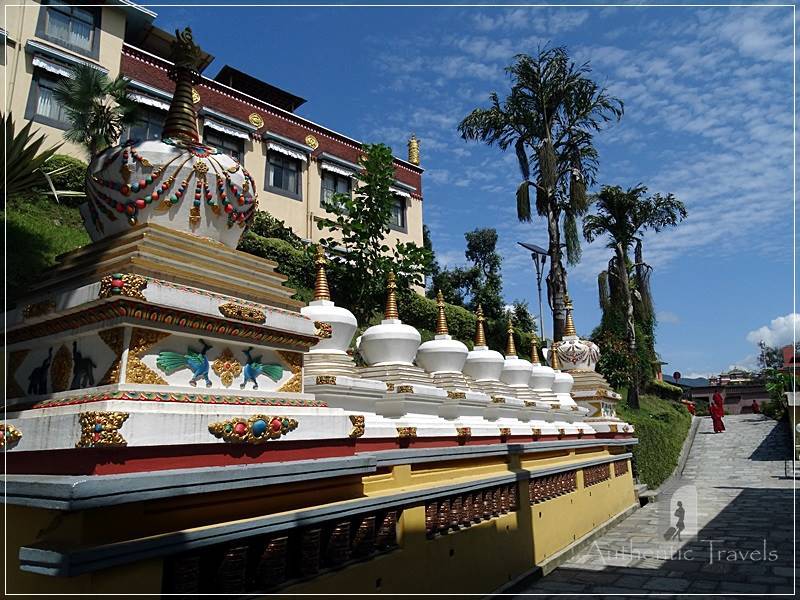
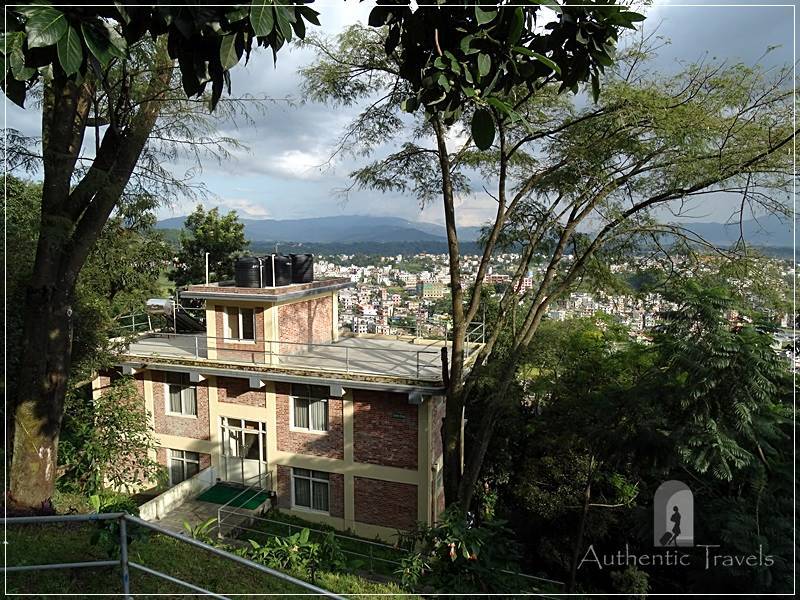
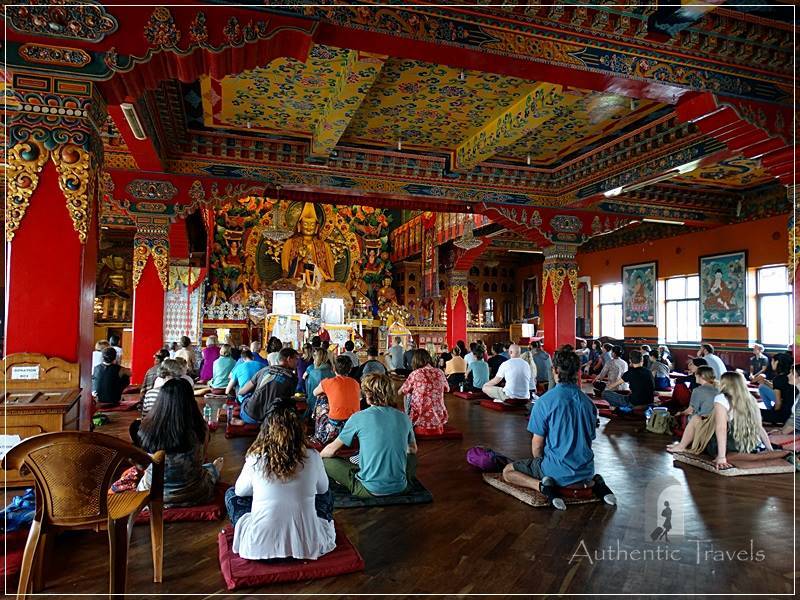

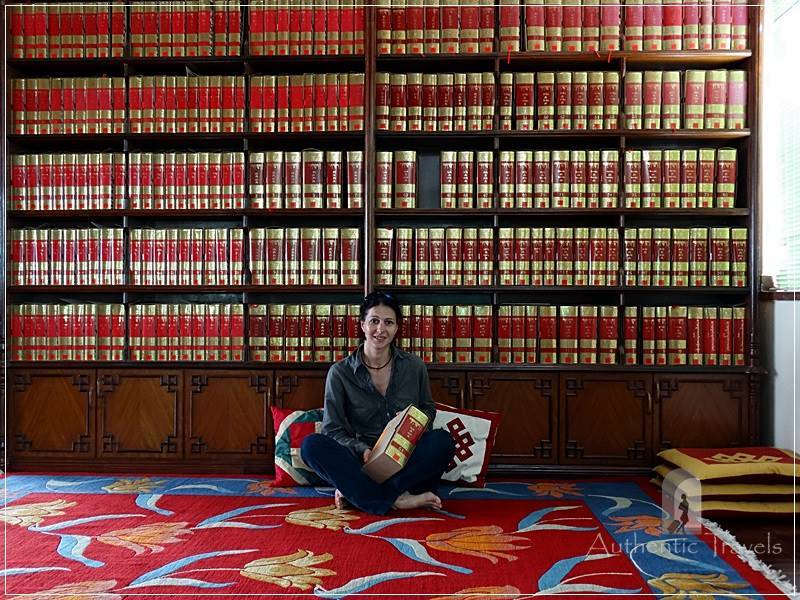
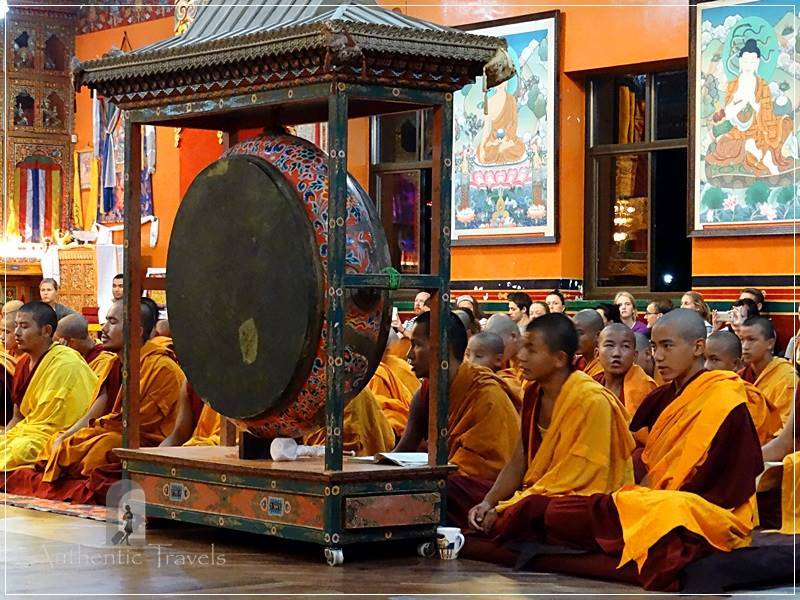
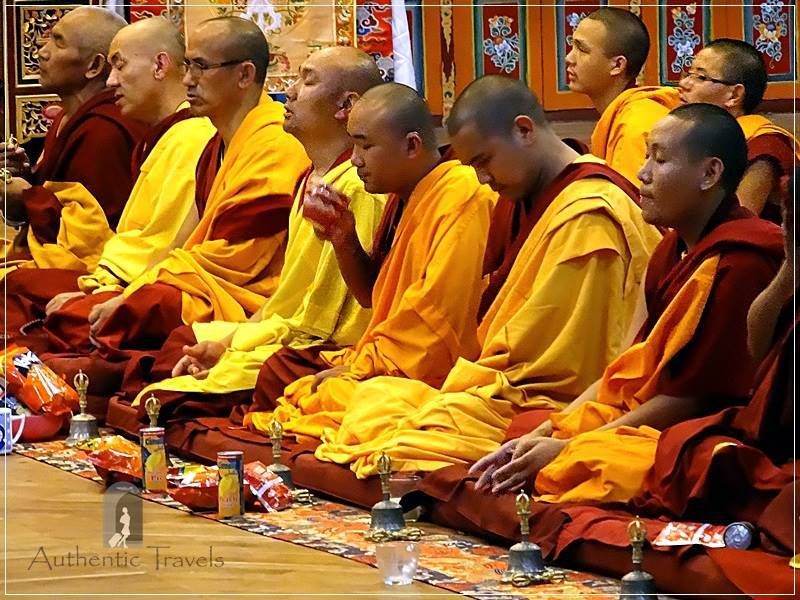
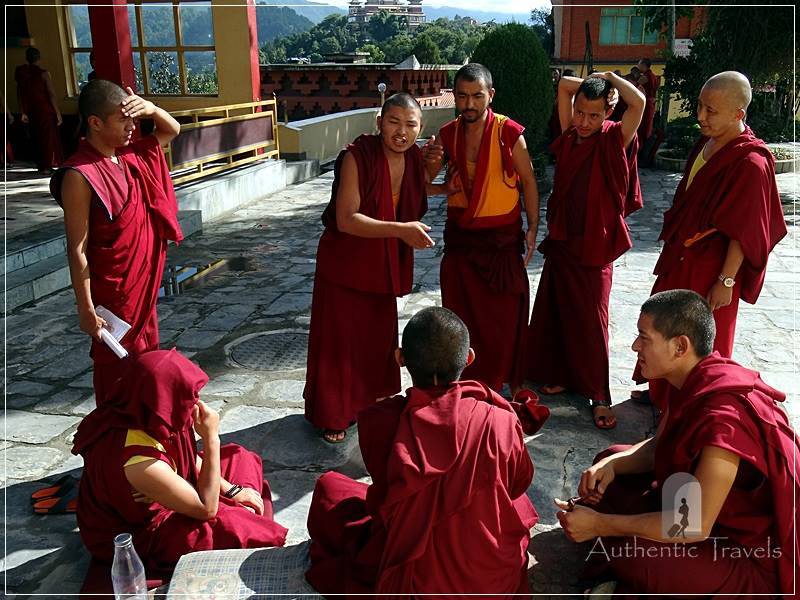
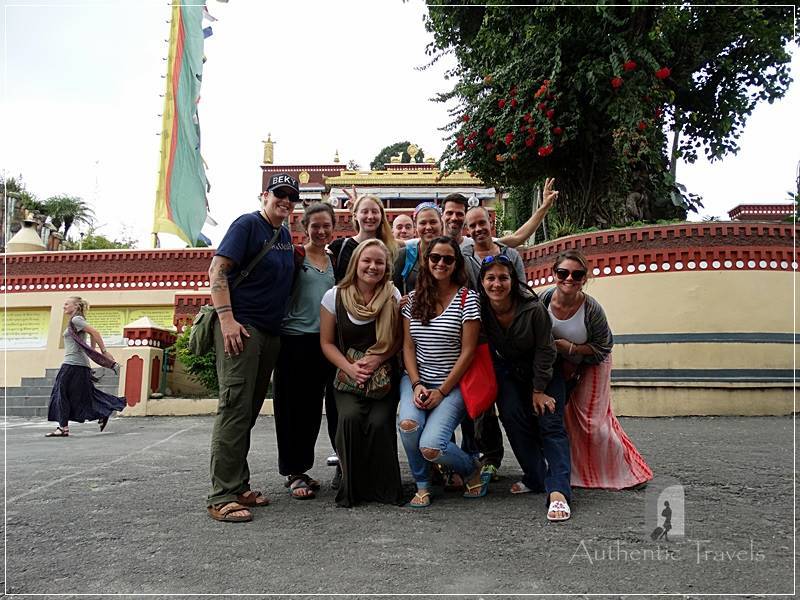
Thank you for sharing your experience and for your honesty – not everybody can openly accept that certain spiritual experiences are not for them, as there is a big risk of being judged! I always found that there is a big difference in practicing the same philosophy when being “isolated” from an Earthy life and when leading a “normal” life. It is great to learn and carry on in our every day reality whatever is applicable without loosing a touch with ourselves and what is really important to us.
Hi Anastasia, thank you for your honest comment. I am happy you resonated and not judged me. I think that it is better to be honest with ourselves and with others than pretending and getting stuck into a certain philosophy or religion. You create more authentic relationship in those moments.
I felt like I was watching a film or a documentary reading your article. Well-written and very interesting. I would never dare to stay at a Buddhist monastery – perhaps I would be curious, but not as adventurous as you that really took part in it. I admire your honesty and courage for breaking the rules and ‘feeling manipulated.’ Is this something that they frowned upon though, when you started missing meditations? What was it that you think “lacked” in the philosophy that didn’t fully satisfy your interests or personal needs? It would be interesting to know, because you mentioned how you loved it initially, then sooner on it felt like you “should be” someone rather than a unique individual.
Nobody frowned when I skipped the meditations. We were 150 participants at this course, so I don’t think that someone noticed my absence. What lacked it was the freedom of my own choice. I was told that “I have to” instead of “I can choose”. I mentioned in the article that one teacher was more open minded than the other one. My experience there doesn’t mean that Buddhism is good or bad, but it means that the teacher is very important.
Thank you for sharing this amazing spiritual experience with us! Buddhism is full of ideology beneficial for us all, everyone could use some calming down. I have been often staying in Hindu Ashrams and experiencing something similar. I always say with more meditation there will be less wars!
Hindu Ashrams seem interesting as well. When I go to India, I’ll try them as well.
I’m becoming a fast fan of your blog, this is truly the most authentic catalog of experiences. The Kopan Monastery is really well known but I didn’t have time to check it out while I was in Nepal. I’m glad that you listened to your inner voice and walked away from the times you felt judged. I honestly laughed out loud reading about the quick wear of dahl baht, we were in a ten day homestay and had to eat it three times a day, but the family we were with gave us all they had so it was rude to refuse. I think we had pizza the first day we were back in Kathmandu!
I can resonate with that so much. We were planning to go and eat a big steak on our return to Kathmandu because we were sick of eating rice and vegetables each day. The funny thing is that I had to go trekking after the retreat and I felt so weak.
I loved to read about your experience with the Buddhism course. I recently travelled through Nepal, but didn’t had the chance to stay a couple of days in a monastery. I just shortly visited some monasteries. Hope to do it one day, so I could experience the real ‘psychology of our mind’ like you did.
It is an interesting experience. Maybe 10 days is too much, but sometimes you can get the real feeling about something only when you exceed the limit. 😉
I found this article super interesting! I leave for Nepal soon and have registered for this course. I’m considering doing the 5 day meditation course instead? Do you the 10 days would be better or stick with the 5 days?
You have daily meditation (morning/afternoon) also during the 10 day course. The difference from the 5-day meditation is that during the course you have also speeches/lessons of the nuns/monks/guru.
I actually visited Bhutan two months back and went to so many monasteries. It feels like another world altogether. Kopan monastery is as gorgeous and I am pinning it to visit list once we plan on visiting Nepal.
You have to go there. It is an experience no matter what your thoughts will be after going there.
It’s cool, you had the experience and decided is not for you. We are free to chose our ways and what to believe in, how to live our lives, eventually everybody finds their place in this world and what their mission is and what they will live for. I believe in God.
Thank you Joy for your honest support. I am so happy you said all those wise things.
Thanks for sharing your experience. I actually thought Buddhism was a religion and was just having the discussion with my husband the other day – neither of us knew its just a philosophy. Thanks for clearing that up – as it is a wide misconception.
Your photos are amazing – glad you got to experience this.
Actually, we were told at the monastery that Buddhism is a philosophy, but as I stayed there for 10 days though I had the feeling of a religion.
Hello, I am thinking on taking the course now in september and when registering, it says that you accept that attendance is compulsory to all the sessions. Was it that way when you did it? Because as I read, you were skipping some sessions. My fear is not to be able to tolerate the whole course.
Thank you
Hey Maria, the program of the course is very intense, indeed. Better take a single room so that you can rest well and benefit from the course as much as you need/want/enjoy. The first days I was always sleeping between the sessions. But by the end of the course, the nun that was our leader kept repeating herself and it wasn’t interesting for me anymore – this is the main reason I skipped the classes with her. I felt that I was told what to do and not only guided as it should be a spiritual path. She also frightened us a couple of times that we MUST come to all the sessions, which I didn’t find a mature way of teaching, so I skipped again, just to see what happens. Well, don’t worry, nothing happened. You pay there so nobody is going to punish you for skipping the classes if you’re too tired or you consider that is not interesting for you anymore. Here is another article I wrote about my experience at Kopan Monastery: https://sonderers.com/winter-diversity/discovering-buddhism-at-kopan-monastery?rq=iuliana%20marchian
This post is so interesting! I started reading it thinking wow I really want to go there. By the end, I realised it probably wasn’t for me either. But wow what an experience! I bet the meditation knowledge you now have is amazing. Thanks so much for sharing your experience.
You never know. I am a very curious person, so why not!?
I am really impressed that you lasted ten days. I like the idea of learning more about buddhism but think it is just too strict for me. I have done retreats in India with a restricted diet and found it incredible but it was still hard. All that detoxing plays havoc with my mind and although worth it in the end, there are ups and downs along the way. It must have been a tremendously empowering experience but I am far too much of a chatterbox to seriously consider this.
Well, I went there for the experience itself. I also wanted to learn something, but when I saw that they were telling me what to do, nope, I skkiped the classes.
Wow this seems like it was a pretty incredible experience! I am in love with the detailed stupa and other architecture in this. Super interesting post!
Yes, Kopan is one of the biggest monasteries in Kathmandu and I loved being there and admiring all that authentic Buddhist architecture.
Wow, this is intense. I don’t know if I could go through that for that amount of time. I can see how it would be draining and mentally tiring. It sounds like it was a good experience for you and I am glad you knew when you step back and take a moment for yourself. No one needs to make you feel guilty for living life. I really enjoyed reading about your experience here. Thanks for sharing.
Hi Susanna, thank you so much for your kind words. I feel supported by you and I appreciate so much your honesty and encouragements. I am happy that you liked the post and that you had time to go through it.
Oh my gosh – this sounds absolutely amazing! I studied eastern religion in college, and this sounds like a really amazing opportunity to get a more hands-on approach. I’ve loved temple visits in the past, and absolutely loved them, but THIS sounds just so amazing! I’m heading to Nepal early next year – I’ll be looking into this! Thanks for sharing!
You can check up also my other posts from Nepal. I’ll be sharing them as soon as I post one.
The stupa looks gorgeous!
The first time I heard of a meditation retreat was 3 years ago. When he first told me about it, I thought ‘oh that would be easy. Not talking to people for 10 days.’ But I’m not so sure because I like to talk and meet new people haha. I do like the idea of focusing on yourself and stepping into a new state of mind.
I am open to people’s beliefs and religions as long as they don’t try to push it on me. I like to learn and hear about different stories and practices but once they start pushing, I’m done listening.
Hi Jojo, thanks for stopping by and reading my experience at Kopan monastery. Well, it is easy to not talk to someone for 10 days but I don’t know how healthy it is to do for longer. We are social beings and I believe we are here on this planet to share things, experiences, and life together. While it is ok to retreat for 10 days and connect to yourself, I think it is a must to connect with others as well.
It was interesting, reading about your experiences in the Kopan monastery. Buddhism is indeed a fascinating and somewhat mystical religion. Your candid post throws light on how the Buddhism courses are structured.
I am happy that you found this post interesting.
Thanks for sharing your honest experience with us. I had no idea what Buddhism is a philosophy. I’ve always had a really hard time meditating so I know this experience wouldn’t be for me but good thing you tried it out!
I like meditating and I know the benefits of meditation are great. But unfortunately the goal of meditating is not telling you what you have to do or think. Buddhism is a cool religion if you take what you need out of it.
what a fabulous experience! If you want to learn Buddhism than it’s best to learn it in context and at such a monastery. You are very lucky to experience it like this.
I thought the same way when I booked the retreat in Kopan Monastery.
Wow, what an amazing experience! Even if Buddhism ultimately wasn’t for you, it is always wonderful to try new things and find what you do like & enjoy. It would certainly be interesting to learn more about other religions (or philosophies!) I think more of us should do this and understand more about our fellow man!
Hi Claire, thank you for your kind comment. You know that all religions promote love and compassion but many times this was understood in a negative way (like killing for the sake of it). I think that it is important to take what is best for us from each religion. There’s no such thing as the perfect religion or philosophy. It is only what’s best for us and what we need in that moment.
What an interesting experience 🙂 Wow!! I love your photos.. Thanks for sharing with us
Thanks 4 sharing your experience 🙂
Thanks David. However, this is only my personal experience, so it’s very possible that you have a different experience if going there (which I highly encourage you). Nepal it’s an experience just being there after all.
I’m going to Kopan for a full month in couple of months. After reading your post I hope not to find many people like you during my stay – I hope people have at least read the basics and have a basic understanding. There are limited places, so people that is not interested should not occupy places to have mango juice, sunbathing and play with the dog – you could do that by simple visiting the place during the day.
Have you ever considered that maybe nothing worked for you basically because you didn’t follow their teachings?
Looks like you – and many of the readers here – are more interested in getting a nice picture or “awesome” experience rather than exposing yourself to something new and experience something different, as falsely claimed here. The fact that you avoid things as soon as they go different that what you expected/like is proof of that.
Rodrigo, if you go for a full month, you will definitely not meet so many people there. I participated in the Buddhism Introductory Course so this is why it was so crowded. The monastery has a lot of space and many buildings for all types of accommodation, so I am sure nobody will have to suffer because of that. About me, yes, I have considered that my experience there wasn’t at the maximum level of enlightenment because I didn’t respect all their rules – but this was my choice, I wrote about my experience and my choices. This way the way I chose and I am aware of that. I said it just didn’t work for me but it might work for others. However, along ‘my way’, I have found out that you don’t become a better person sticking to rules but being kind to yourself and allowing you to be just the way you are (i.e. including having mango juice instead of another meditation). Maybe for some people having meditations all the day works best, for me it works in a different way. But this is the beauty of the world: we are so different. I am confident that you will have a great time at Kopan. I would love to hear your experience there after you come back so don’t hesitate to come back here a leave a new comment.
Thank you for this article, I love your honesty and expressing of your feeling and emotions. I think life is not just about enlightenment, but about learning and experiencing life lessons which helps your soulgrowth. I think negative karma is caused by losing the connection witht he heart and should never be described ad bad but just as a way to find your love, soul and heart again. Sometimes teachers, even in Buddhism can be very pursuaing in following the path, but in the end all paths lead to the same source. I think like teacher Joan who leaves the experience open to the attendy is more open and the view of Ani Karan is really strong focussed on the teachings and that can be sometimes rigid. But thats ok. For all here is a teacher who fits. Sometimes dedication, somejust just tasting the first beginning of a teaching.
I am really curious what this experience brought you, and then I mean after a few months.
Hi Nathalie, Thx for you comment and support. I have tried to describe my experience (with my non-native English) as objective as I could. From your comment, it seems I have done that and I am happy to read your thoughts. To be honest, the upcoming year I am planning to go to a Buddhist monastery again, somewhere in Thailand this time. However, I am not seeking anything in particular, I am just curios to see how I feel.
Before my Kopan-experience, I had done guided meditations here in Romania and everything was free of limits and conclusions. Whenever they come, they are welcome. Probably that’s why I felt so obstructed by Ani Karen, because I was used to find my path more freely. It fullfills me more to take things when I feel I need, not when I am told to do so (this last part is something it doesn’t fit my at all). Now I continue my weekly meditation practice, I practice yoga (yin + kundalini) twice a week, and I practice letting go described by dr. David Hawkins in one of his books.